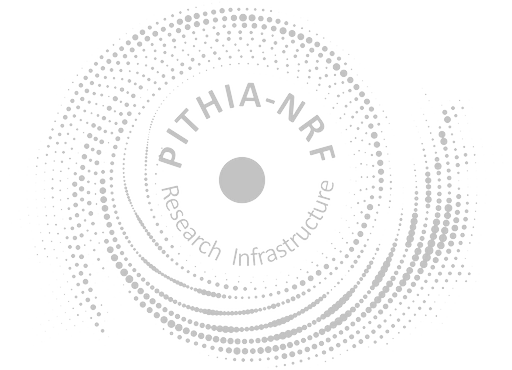<?xml version="1.0" encoding="UTF-8"?>
<DataCollection xmlns="https://metadata.pithia.eu/schemas/2.2" xmlns:gmd="http://www.isotc211.org/2005/gmd" xmlns:om="http://www.opengis.net/om/2.0" xmlns:xlink="http://www.w3.org/1999/xlink" xmlns:xsi="http://www.w3.org/2001/XMLSchema-instance" xsi:schemaLocation="https://metadata.pithia.eu/schemas/2.2 https://metadata.pithia.eu/schemas/2.2/pithia.xsd">
<om:phenomenonTime/>
<om:resultTime/>
<om:procedure xlink:href="https://metadata.pithia.eu/resources/2.2/process/kul/CompositeProcess_EUHFORIA"/>
<om:observedProperty/>
<om:featureOfInterest>
<FeatureOfInterest>
<namedRegion xlink:href="https://metadata.pithia.eu/ontology/2.2/featureOfInterest/Heliosphere_Inner"/>
<namedRegion xlink:href="https://metadata.pithia.eu/ontology/2.2/featureOfInterest/Heliosphere_Near-Earth"/>
<namedRegion xlink:href="https://metadata.pithia.eu/ontology/2.2/featureOfInterest/Heliosphere_Remote-1AU"/>
<namedRegion xlink:href="https://metadata.pithia.eu/ontology/2.2/featureOfInterest/Sun_Corona"/>
<namedRegion xlink:href="https://metadata.pithia.eu/ontology/2.2/featureOfInterest/Heliosphere_Beyond-1AU"/>
</FeatureOfInterest>
</om:featureOfInterest>
<om:result/>
<identifier>
<PITHIA_Identifier>
<localID>DataCollection_EUHFORIA</localID>
<namespace>kul</namespace>
<version>3</version>
<creationDate>2023-02-28T01:30:00Z</creationDate>
<lastModificationDate>2025-05-20T05:14:00Z</lastModificationDate>
</PITHIA_Identifier>
</identifier>
<name>EUHFORIA: EUropean Heliospheric FORecasting Information Asset</name>
<description>EUHFORIA (EUropean Heliospheric FORecasting Information Asset) consists of two main parts: a semi-empirical
coronal model, the purpose of which is to determine the plasma environment of the solar wind at the location
of the inner boundary of the heliospheric module, and the heliospheric model, which provides the dynamics of
the background solar wind with superposed CMEs into the inner heliosphere by numerical evolution of the MHD
equations. EUHFORIA runs at the Virtual Space Weather Modeling Center (VSWMC) on the ESA Space Weather Network
(ESA-SWE) website (https://swe.ssa.esa.int). VSWMC is an interactive modeling system developed for space weather
research from the Sun to the Earth. It allows users to run different tools stand-alone or in combination with
models that are locally or geographically dispersed.</description>
<type xlink:href="https://metadata.pithia.eu/ontology/2.2/computationType/SemiEmpiricalModel"/>
<project xlink:href="https://metadata.pithia.eu/resources/2.2/project/kul/Project_KUL_EUHFORIA"/>
<relatedParty>
<ResponsiblePartyInfo>
<role xlink:href="https://metadata.pithia.eu/ontology/2.2/relatedPartyRole/PrincipalInvestigator"/>
<party xlink:href="https://metadata.pithia.eu/resources/2.2/individual/kul/Individual_KUL_Poedts"/>
</ResponsiblePartyInfo>
</relatedParty>
<relatedParty>
<ResponsiblePartyInfo>
<role xlink:href="https://metadata.pithia.eu/ontology/2.2/relatedPartyRole/DataProvider"/>
<party xlink:href="https://metadata.pithia.eu/resources/2.2/organisation/pithia/Organisation_KUL"/>
</ResponsiblePartyInfo>
</relatedParty>
<collectionResults>
<source>
<OnlineResource>
<serviceFunction xlink:href="https://metadata.pithia.eu/ontology/2.2/serviceFunction/Numerical"/>
<serviceFunction xlink:href="https://metadata.pithia.eu/ontology/2.2/serviceFunction/Graphical"/>
<linkage>
<gmd:URL>https://swe.ssa.esa.int/kul-cmpa-federated</gmd:URL>
</linkage>
<name>Latest VSWMC at ESA-SWE Landing Page</name>
<protocol>HTTPS</protocol>
<description>
The ESA-SWE website requires an account to run. Once received, go to the VSWMC webpage and select:
"NEW RUN". From the list of model chains that appear, you can choose those that contain EUHFORIA,
or separately the coronal and heliospheric EUHFORIA models. Also, the combinations can be found by searching.
Now there are eleven chains with the EUHFORIA models:
1) EUHFORIA;
2) EUHFORIA Corona;
3) EUHFORIA + Indices;
4) EUHFORIA + Indices + GUMICS4;
5) EUHFORIA + Indices + Gorgon-Space;
6) EUHFORIA + Indices + Gorgon-Space + CTIP + MCM;
7) EUHFORIA + Indices + ODI + NARMAX;
8) EUHFORIA + Indices + ODI F10.7 + CTIP + BPIM;
9) EUHFORIA + SNGI (NARMAX) + ODI F10.7 + CTIP + BPIM;
10) Multi-VP + EUHFORIA + Indices;
11) Wind-Predict + EUHFORIA + Indices.
</description>
<dataFormat xlink:href="https://metadata.pithia.eu/ontology/2.2/resultDataFormat/image-png"/>
<dataFormat xlink:href="https://metadata.pithia.eu/ontology/2.2/resultDataFormat/text-plain"/>
</OnlineResource>
</source>
</collectionResults>
<dataLevel xlink:href="https://metadata.pithia.eu/ontology/2.2/dataLevel/L4"/>
<qualityAssessment>
<dataQualityFlag xlink:href="https://metadata.pithia.eu/ontology/2.2/dataQualityFlag/DQ0"/>
<metadataQualityFlag xlink:href="https://metadata.pithia.eu/ontology/2.2/metadataQualityFlag/MQ1"/>
<metadataQualityFlag xlink:href="https://metadata.pithia.eu/ontology/2.2/metadataQualityFlag/MQ2"/>
<metadataQualityFlag xlink:href="https://metadata.pithia.eu/ontology/2.2/metadataQualityFlag/MQ3"/>
<metadataQualityFlag xlink:href="https://metadata.pithia.eu/ontology/2.2/metadataQualityFlag/MQ4"/>
<metadataQualityFlag xlink:href="https://metadata.pithia.eu/ontology/2.2/metadataQualityFlag/MQ9"/>
</qualityAssessment>
<permission xlink:href="https://metadata.pithia.eu/ontology/2.2/licence/CCBY"/>
</DataCollection>

